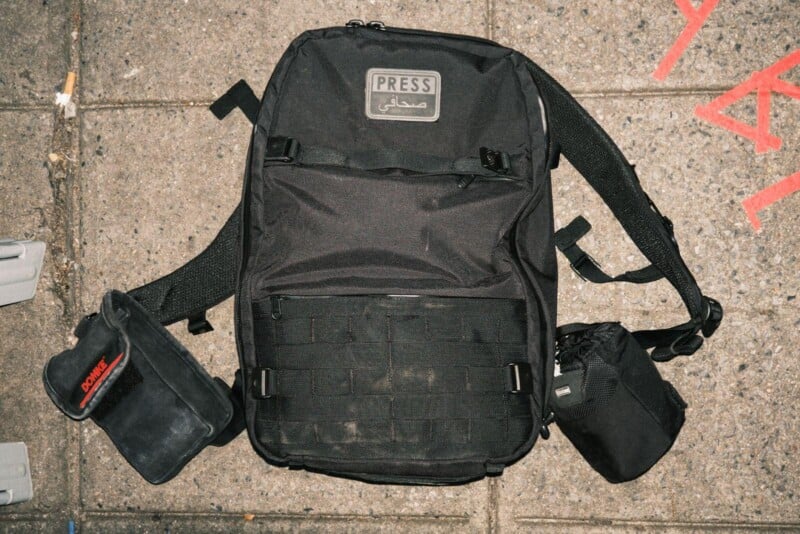
![]()
Like many photographers, I own a million bags. Some have different purposes, one for day-to-day work and one for traveling, one for quick access during rainy days, one for studio days.
My first bag was a Lowepro sling bag that was like carrying a giant padded cube. As a photojournalist and street photographer, I have many different setups so I acquired quite a few different bags. The most common backpack for years amongst photojournalists was the Think Tank Shapeshifter, which allows one to carry a ton of gear each in its own padded neoprene sleeves. It also allows for quick access to two cameras with 24-70mm and 70-200mm lenses attached, the most common setup for many of us. For DSLRs it was great.
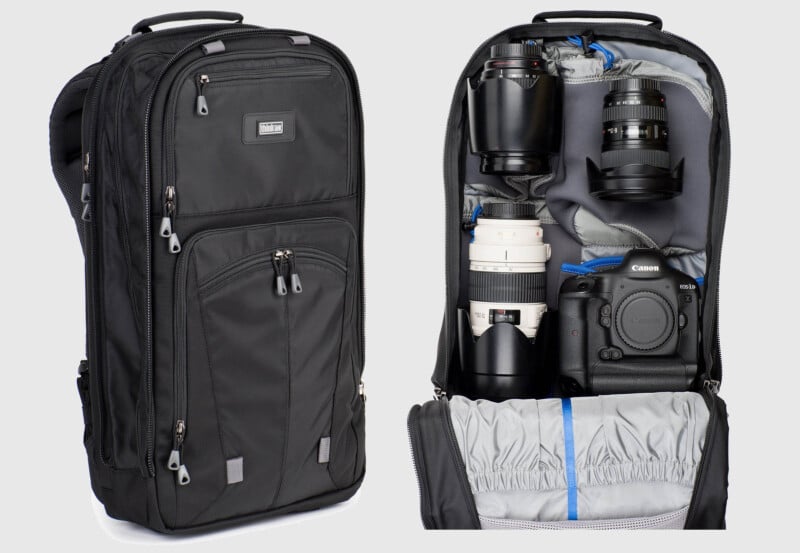
Now with mirrorless, its problems are more glaring: it’s a gigantic bag and though it zips down, it’s very heavy and cumbersome and weighs almost 5 lbs empty. This makes a difference on long days. I never liked that it is obviously a camera bag or at least a bag with electronics inside. Think Tank briefly tried to make a “naked” version and a smaller version but neither worked very well and were soon abandoned.
![]()
For years after I tried using noncamera bags, a North Face Recon, Topo Daypack, Prometheus Design Werks, and lastly a variety of Go Ruck bags. Each worked reasonably well and I liked that they were more discreet than a camera bag. The main problem was that they usually had no laptop compartment (North Face, Topo) or no sections to separate cameras from each other, lenses, and things like lunch, extra jackets, etc (Go Ruck). The Prometheus Design Werks had dividers and a laptop compartment but the cameras slid around on the inside and the backstraps were not very cushioned given how much it was intended to carry.
The Go Ruck bags were my go-to for years but they are extremely expensive and have no internal dividers.
Enter the Cutline A1. Developed by a photojournalist, it is the best hybrid bag I’ve seen so far.
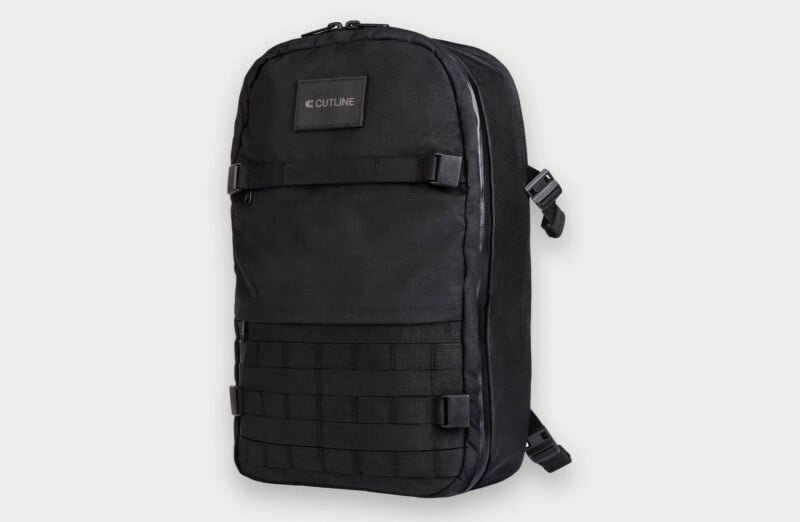
It’s lightweight, weighing in under 3 lbs, but tough enough for daily assignments. It has Molle stitching in both horizontal and vertical so you can strap camera bodies, lenses, or flashes so they don’t hit against each other, or you can add pouches on the inside like the shapeshifter.
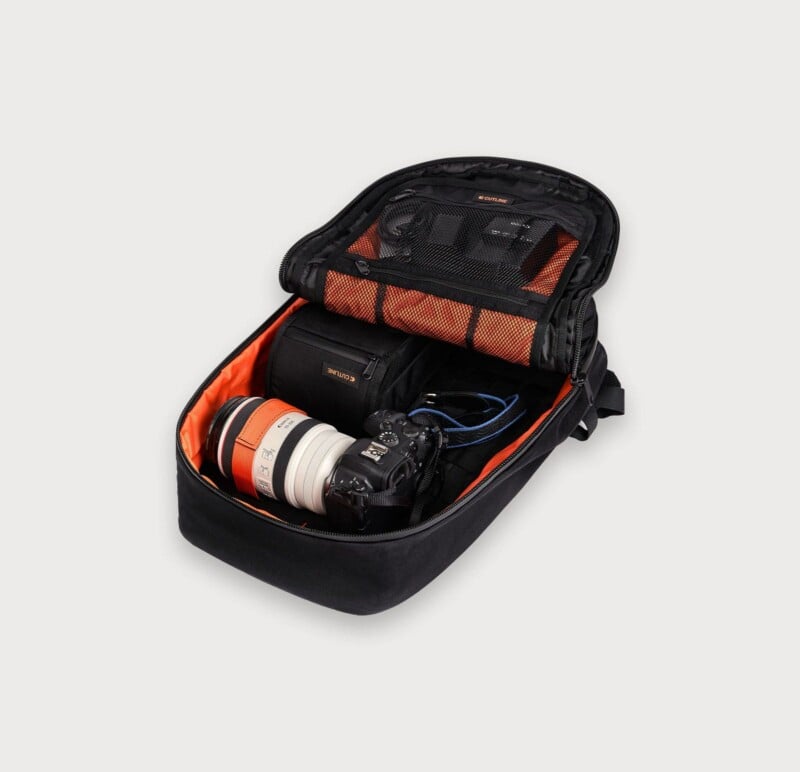
Clever orange velcro straps allow things to be suspended within the bag but are easy to undo or reattach in a hurry. It has two side pockets for small items such as mobile hotspots, laptop batteries, a passport, etc. Two zippered compartments on the exterior make it easy to stow a press pass, a granola bar, some keys, or things like a laptop cord. It has enough pockets but not too many where you forget where things are.
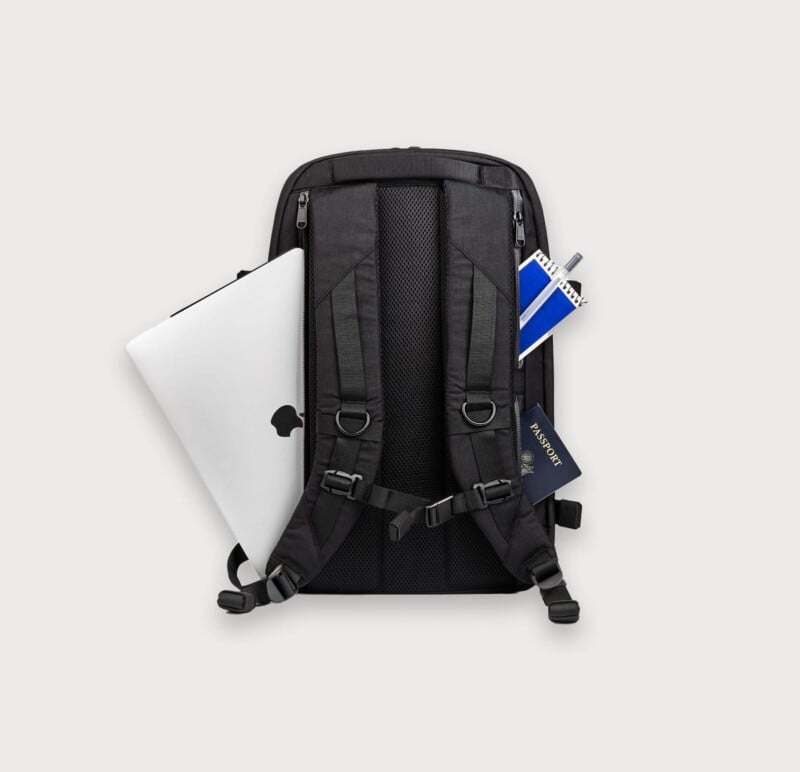
Having the side access to the laptop allows me easy access in a car or on the sidewalk when filing pictures. You can add a pouch for a water bottle or extra lenses on the front or attach them on the backpack straps.
The Cutline bag itself slims down when you’re shooting with your cameras out, something that comes in handy while covering protests or politics where there isn’t a lot of space to move around or packing it into a suitcase when traveling.
The zippers are the perfect size for durability, but not as heavy as the Think Tank ones, which seem overbuilt and clunky. The Cutline zippers are water-sealed eliminating the need for excess fabric. Instead of clips, the bag uses Fidlock magnetic fasteners, which are both easy to open and close and lighter. It doesn’t look like a camera bag and has better-padded straps and back panels than any other bag I’ve used.
The modularity allows for combinations of setups, which is particularly good for traveling or switching from journalism to street photography. It can hold big mirrorless zooms, but then shrink down if you want a day with just a couple of primes. For portrait days it can hold a Profoto B10+ with a couple of lenses.
![]()

![]()
There are a couple of things I’d like to see in future bags: a built-in water bottle pocket would be nice. I’d love a smaller version of this bag, maybe 15L for even more pared-down setups and different even lighter fabrics like X-Pac.
![]()
![]()
![]()
![]()
![]()
Will this be the last bag I ever buy? Probably not. I still love my Domke 803, which I’ve used longer than any other. The rest have been sold or live in a closet. But the Cutline one is pretty close to the perfect modular bag for a working photographer I’ve seen yet.
About the author: Stephen Yang is a freelance photojournalist from New York City. Along with covering day-to-day news and features in New York, he has spent time covering the Standing Rock Sioux Tribe in North Dakota, social uprisings in Hong Kong and Baltimore, and hurricanes in Florida and Puerto Rico.
Stephen’s work has appeared in The New York Post, The New York Times, Reuters, The Wall Street Journal, Der Spiegel, and Newsweek among others and his archive is syndicated by Redux Pictures. When not shooting, he is usually trying to find a better sandwich and spicy Chinese food. You can see Stephen’s work on his website and Instagram.
Image credits: Photographs (unless otherwise indicated) by Stephen Yang






